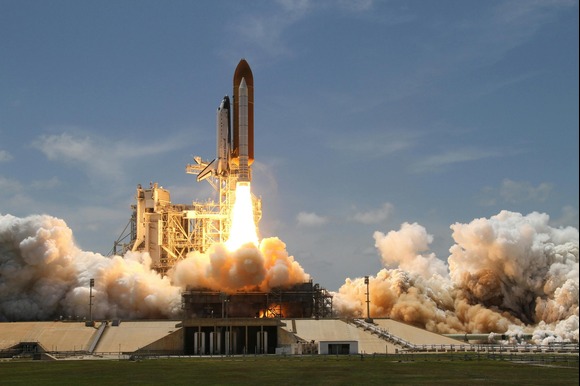
Photo by Pixabay
A private company successfully launched another lunar lander on Wednesday, with the objective of approaching the moon’s south pole. This mission features a drone designed to hop into a permanently shadowed crater that never receives sunlight.
The lander, named Athena and developed by Intuitive Machines, was transported by SpaceX from NASA’s Kennedy Space Center. It is on a rapid trajectory to the moon, aiming for a landing on March 6, while seeking to avoid the mishap experienced by its predecessor, which toppled upon landing.
This marks an unprecedented moment, as numerous spacecraft are simultaneously targeting the moon’s surface. Last month, companies from the United States and Japan collaborated on a rocket launch, sending their landers toward Earth’s natural satellite. Firefly Aerospace, based in Texas, is expected to reach the moon first this weekend, having gained a significant lead.
The two American landers are equipped with experiments valued at tens of millions of dollars for NASA, which is preparing for the return of astronauts to the lunar surface.
According to Nicky Fox, NASA’s science mission chief, this is an exhilarating period filled with enthusiasm, as she remarked to The Associated Press just hours before the launch.
This is not Intuitive Machines’ inaugural lunar mission. Last year, the Texas-based company achieved the first U.S. landing on the moon in over half a century. However, an instrument designed to measure distance malfunctioned, resulting in a hard landing that caused the lander to tip over.
Intuitive Machines has reported that it has resolved this issue along with several others. A repeat of the previous sideways landing would hinder the drone and two rovers from deploying. Additionally, NASA’s drill requires an upright landing to effectively penetrate the lunar surface and collect soil samples for further analysis.
Certainly, we anticipate improved performance this time compared to our previous attempt. However, uncertainties remain, remarked Trent Martin, senior vice president of space systems.
The endeavor to land on the lunar surface is an exceptionally exclusive achievement, accomplished by only five nations throughout history: Russia, the United States, China, India, and Japan. The moon’s surface is strewn with remnants from numerous unsuccessful missions.
The 15-foot (4.7-meter) Athena spacecraft is set to aim for a landing approximately 100 miles (160 kilometers) from the lunar south pole. A mere quarter-mile (400 meters) away lies a permanently shadowed crater, which is the intended destination for the drone named Grace.
Named in honor of the late computer programming pioneer Grace Hopper, the 3-foot (1-meter) drone will conduct three progressively higher and longer test hops across the lunar terrain, utilizing hydrazine-fueled thrusters for propulsion and employing cameras and lasers for navigation.
Should these test flights prove successful, the drone will venture into the adjacent dark crater, estimated to be 65 feet (20 meters) deep. Scientific instruments from Hungary and Germany will gather data at the crater’s base while searching for frozen water.
This mission will provide the first close examination of one of the many shadowed craters located at both the north and south poles. Scientists believe these craters may contain substantial amounts of ice, which could potentially be converted by future explorers into drinking water, breathable air, and even rocket fuel.
NASA has allocated $62 million to Intuitive Machines for the transportation of its drill and other experiments to the lunar surface. In return, the company has offered space on the lander to other entities and has made the Falcon rocket available for ride-sharing opportunities.
NASA’s Lunar Trailblazer satellite is among the tagalongs that will embark on a separate journey to the moon in the coming months, ultimately entering lunar orbit to assess the distribution of water beneath the surface. Additionally, a private spacecraft is set to pursue an asteroid for a flyby, marking a significant step towards the future of asteroid mining. Intuitive Machines is also set to establish the first cellular network on the moon in collaboration with Finnish telecommunications firm Nokia Oyj. Upon arrival, a hopper and a lunar rover, both equipped with technology akin to that of a smartphone, will be deployed and linked to Athena’s cellular network as they investigate the moon’s shadowed craters.




